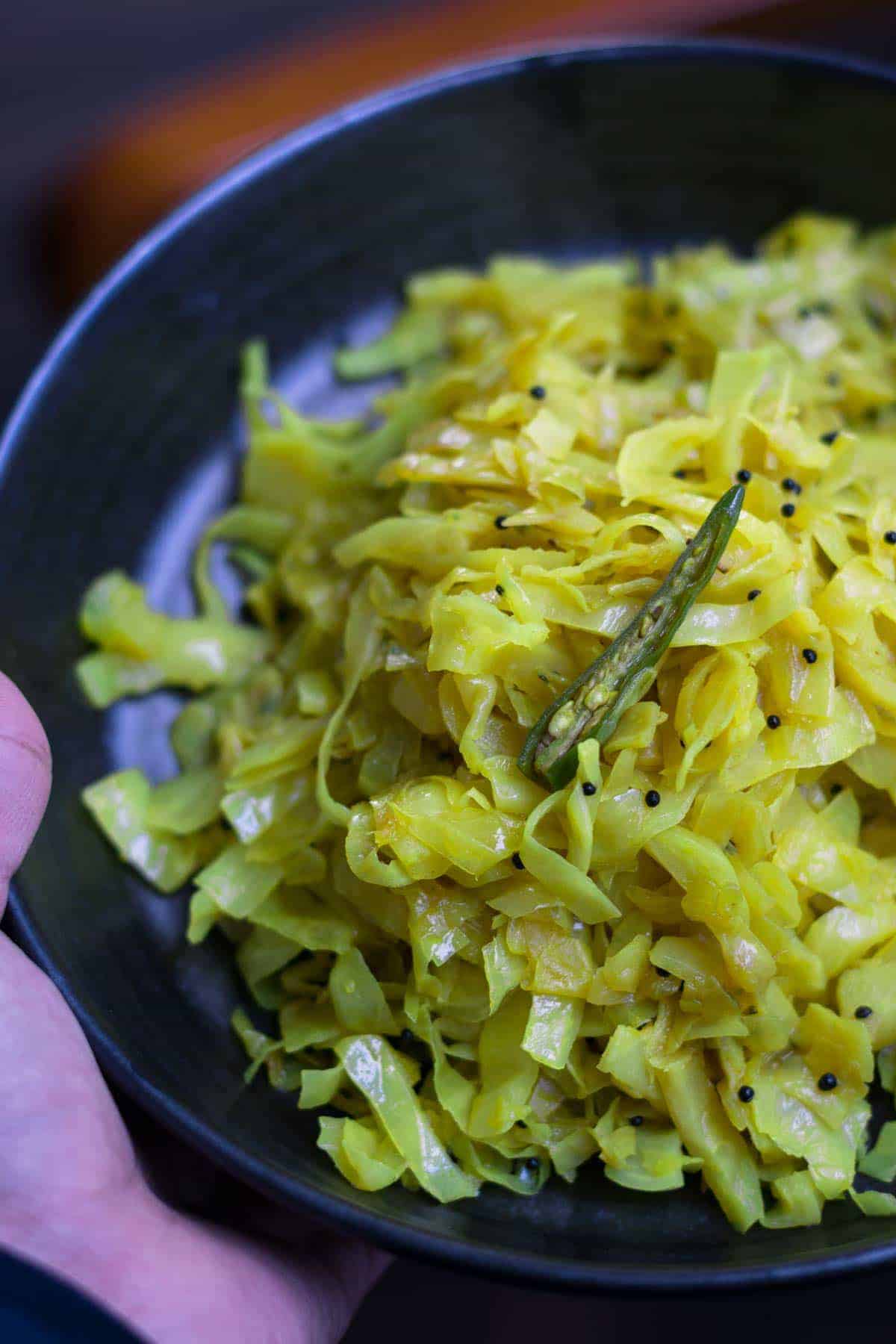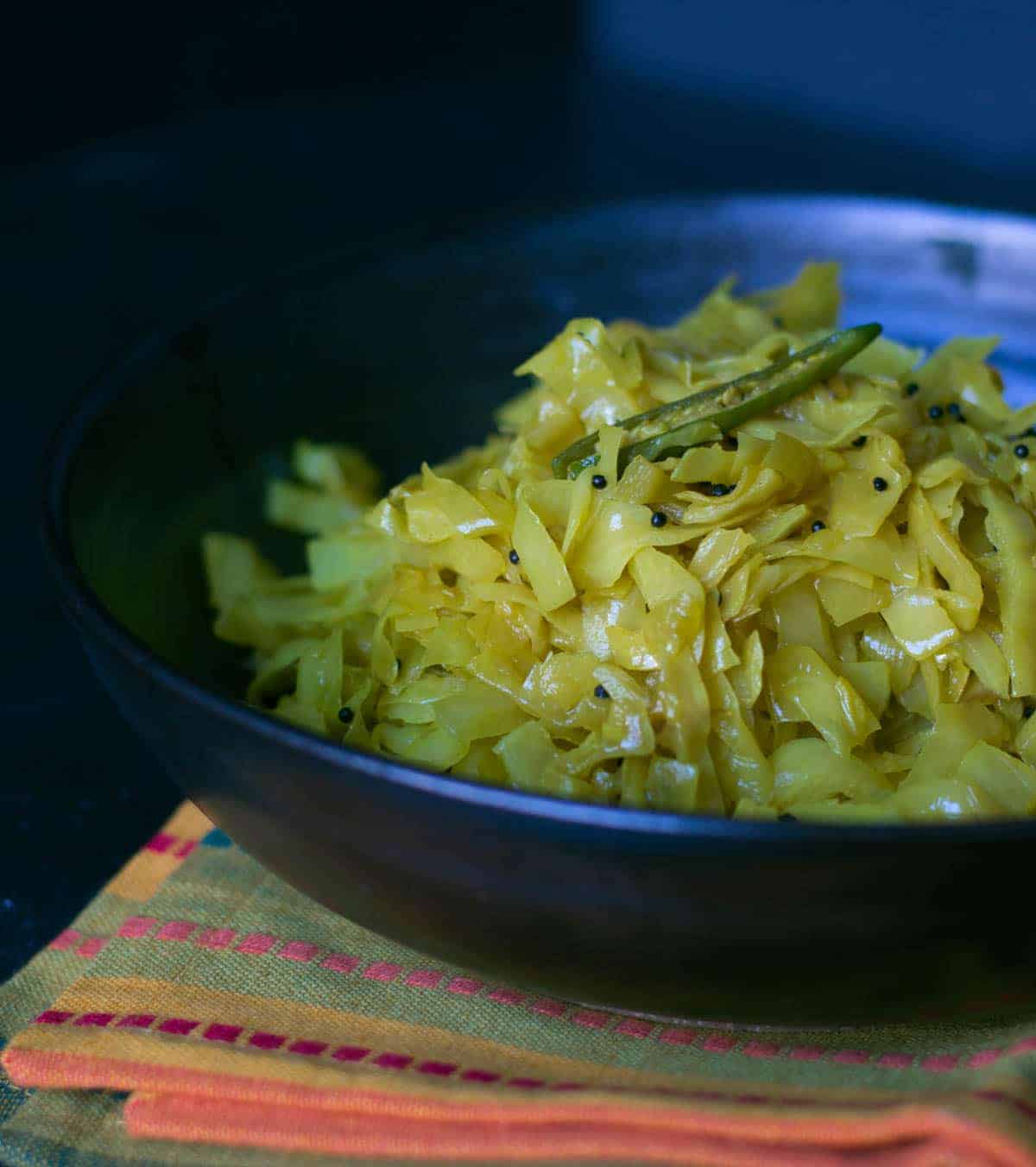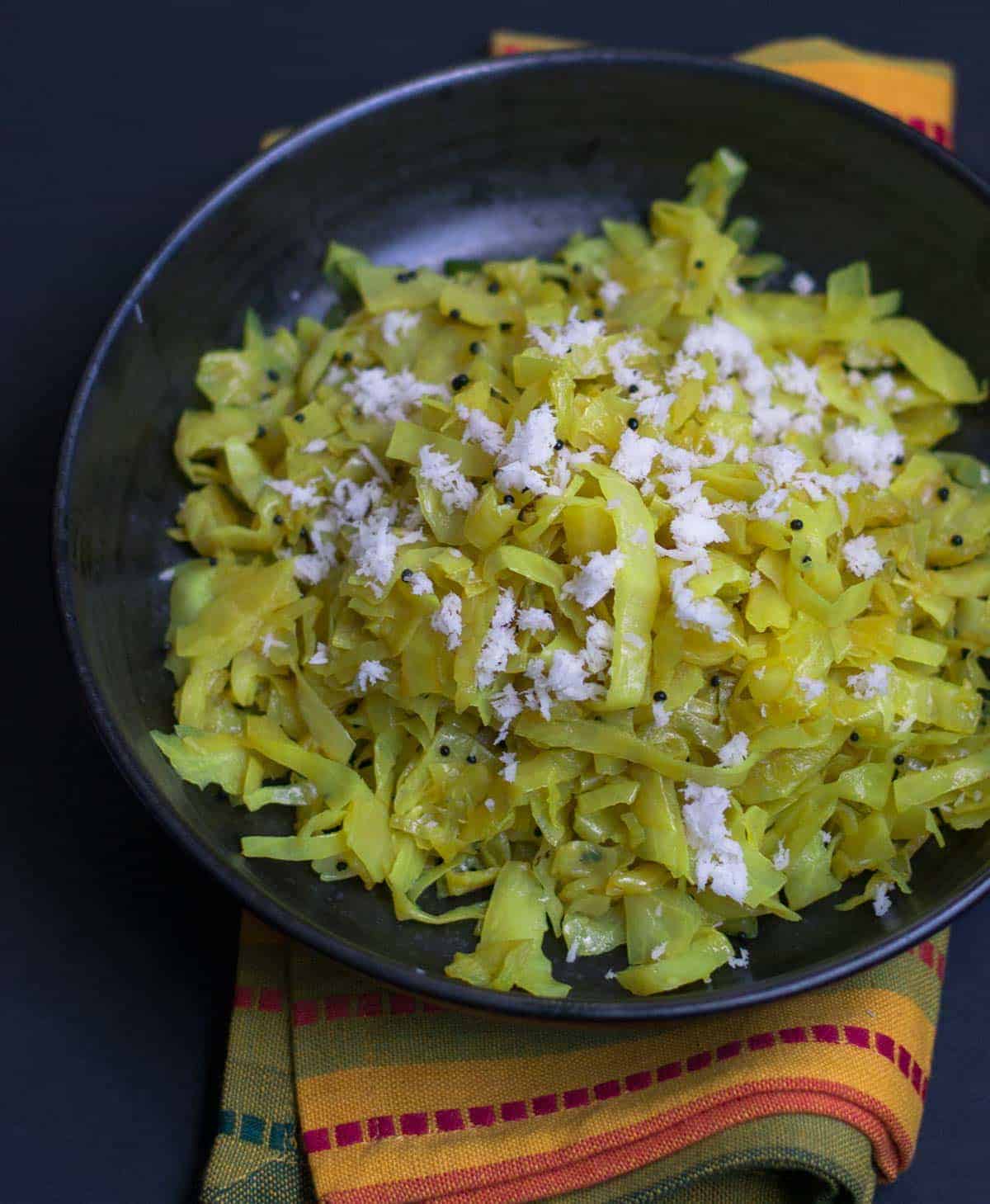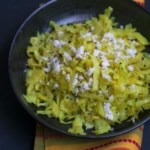Cabbage stir-fry (cabbage sukka/palya/poriyal)
Note: This post contains affiliate links. As an Amazon Associate I earn from qualifying purchases.
Cabbage palya or sukka recipe – This simple, yet flavorful stir-fried cabbage preparation pairs well with steamed rice and sambar and makes for a perfect afternoon meal.
(Note – In case you are wondering, palya or sukka is the word used in Karnataka for sauteed or stir-fried vegetable dishes.)

Most Monday mornings after the kids are off to school, all I want to do is sit back, relax, and read one of the countless free books from my Amazon Kindle unlimited membership that I bought last year.
Sounds lovely, doesn’t it?
Except, that doesn’t happen – in a couple of hours, my 4-year-old daughter gets picked up from school, and within 5 minutes of getting home, she’ll ask, “What have you made for me today“?
It is on lazy days like this the humble cabbage comes to my rescue. Just 30 minutes before I set out to pick her up, I stir-fry chopped cabbage in coconut oil with a few basic spices and then garnish it with freshly grated coconut.
Ta-da!
And just like that, cabbage sukka is ready.

How to make cabbage palya or cabbage sukka recipe?
When you read the recipe below, you’ll see that quite a few ingredients are optional because, for the most part, cabbage, and salt, along with a few chilies, are sufficient to make this flavorful dish.
Variations to the south-Indian style stir-fried cabbage
Depending on which state you are in South India, this stir-fried cabbage recipe will have a different name. It’s called cabbage palya or sukka in Karnataka, cabbage poriyal in Tamilnadu, and cabbage thoran in Kerala.
Cabbage palya or sukka Udupi style – Follow the recipe above until step 2 – Instead of garnishing with coconut at the end, grind two teaspoons of coconut with one byadgi chili and a teaspoon of powdered jaggery – do not add water. Add this ground masala to the cooked cabbage, cover the wok, and let it simmer for a couple of minutes before taking it off the gas.
Cabbage poriyal Tamilnadu style – The only difference I have seen is the inclusion of split urad dal. Add 1/2 teaspoon split urad dal along with curry leaves (kadipatta) in step 2. Continue the remaining process as outlined in the recipe card above.
Cabbage thoran Kerala style – If you have been to an Onam feast, you might have had the opportunity to taste Cabbage thoran. Follow my recipe until step 2. Instead of garnishing with coconut as mentioned in the recipe above, grind two teaspoons of coconut with 1/2 teaspoon cumin seeds – do not add water. Add this ground masala to the cooked cabbage and let it simmer for a couple of minutes before taking it off the heat.
Cabbage poriyal Andhra style – Some cabbage recipes from Andhra include channa dal. Soak one tablespoon of channa dal for an hour and then add them to the oil when you add curry leaves (kadipatta). Continue the remaining process as outlined in the recipe card above.
These are the four variations I have had the chance to experience. I am sure there are plenty of other exciting ways to make cabbage.
What is your preferred style? I would love to hear from you, so please leave me a comment and let me know.


Cabbage Palya Recipe
Ingredients
- 3 cups finely chopped green cabbage
- 1 tablespoon coconut oil
- ¼ teaspoon mustard seeds
- 1 sprig of curry leaves or kadipatta kadipatta
- 2 green chilies slit lengthwise
- ¼ cup finely cut onions optional
- ¼ teaspoon turmeric powder optional
- salt to taste
- 2 teaspoons freshly grated coconut optional
Instructions
- Rinse and drain the chopped cabbage. Set it aside.
- Heat the oil in a medium sized wok or kadhai over medium heat and add mustard seeds to it. When they start spluttering, add kadipatta and green chilies to it. Let it fry for around 20 seconds and then add onions.
- Fry them till they have softened (approximately 5-6 minutes). Add chopped cabbage, turmeric powder, and salt. Mix well. Cover the wok with a lid. Let it cook on medium-low heat for 15 minutes.
- Add the grated coconut to the cooked cabbage and mix well. Cover the wok with a lid. Let the cabbage simmer in the wok for another 5 minutes before taking it off heat.
- Serve hot with steamed rice and curry.
Disclaimer: Approximate nutritional information is provided as a courtesy and can vary depending on the exact ingredients/brands used. If you have health issues, please work with a registered dietician or nutritionist.
